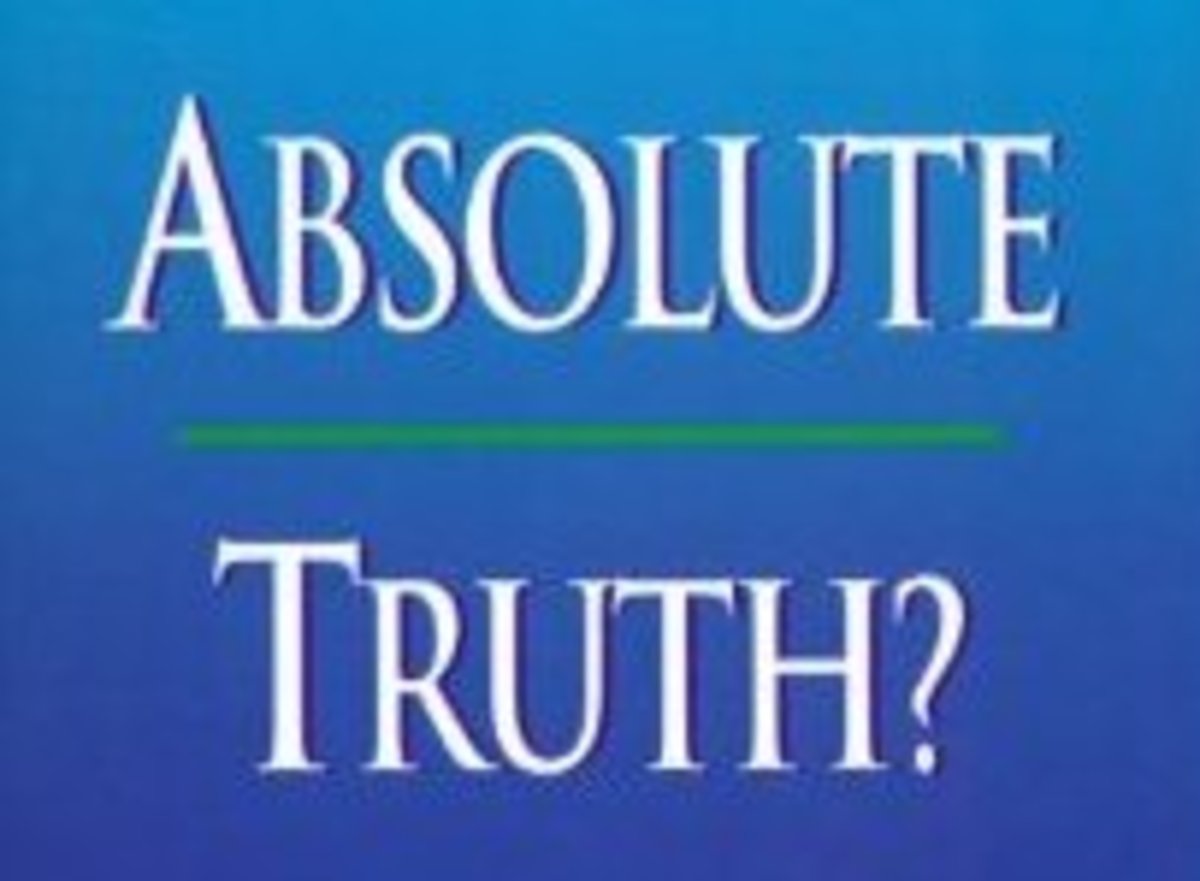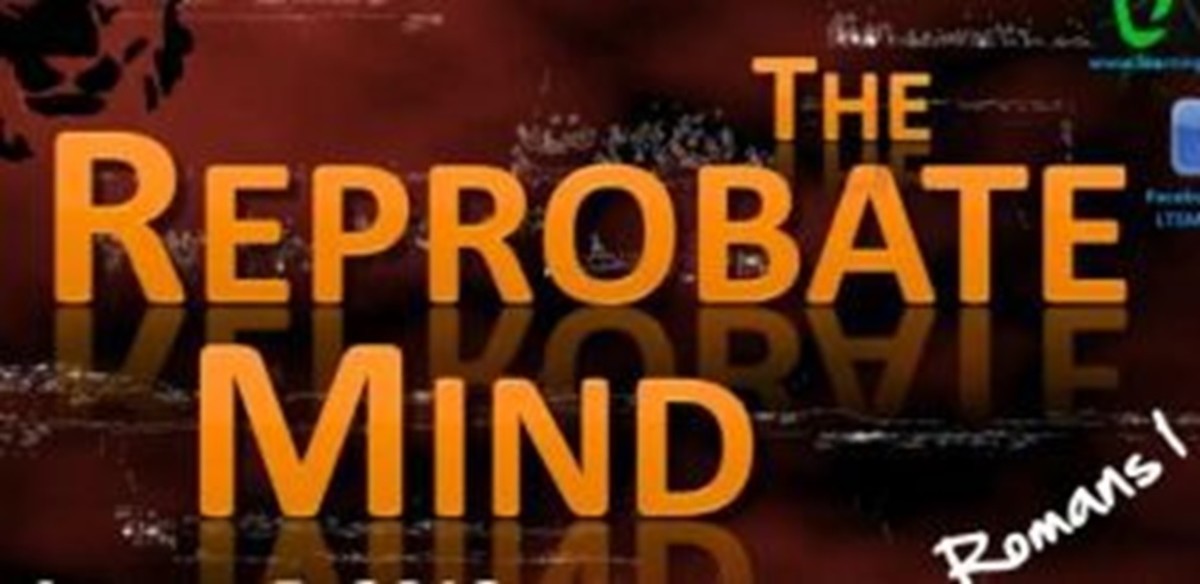Philosophy Essay on Truth, Goodness, and Beauty Part III: The Beauty of Holiness
More by the same author...
- Part I: What is TRUTH?
Part I of this series on Truth, Goodness, and Beauty: What is Truth? - Part II: Is There an Absolute Good?
Part II of this series on Truth, Goodness, and Beauty:Is There an Absolute Good?
Beauty has always been an area of controversy. Even though many people may agree that there is an absolute standard of truth and goodness, they will not automatically make the connection that there must, therefore, be an absolute standard for the Beautiful. Conservative and informed Christians recognize the danger of Postmodernism, and strongly declare that there is one True and one Good, and that is God. Encountering the Good and True in God does not require an emotional response, nor can the absolute Good or True be mistaken for a mere cultural fancy.
But if there is an absolute “Beautiful,” just as there is an absolute Good and True, we assume it will automatically require an emotional response for it to be properly understood. At least, that is our understanding of Beauty. Christians who love intellectual exercises in the historical doctrines of God may cringe at the thought of the sappiness that seems inherent in the idea that God is Beauty. We instantly think of repetitive and emotional praise choruses that base themselves not on true doctrine but on a teary feeling of comfort.
This section will attempt to show that all that is truly Beautiful is also Biblically True and Good, and is an essential aspect of the Christian worldview and our understanding of God.
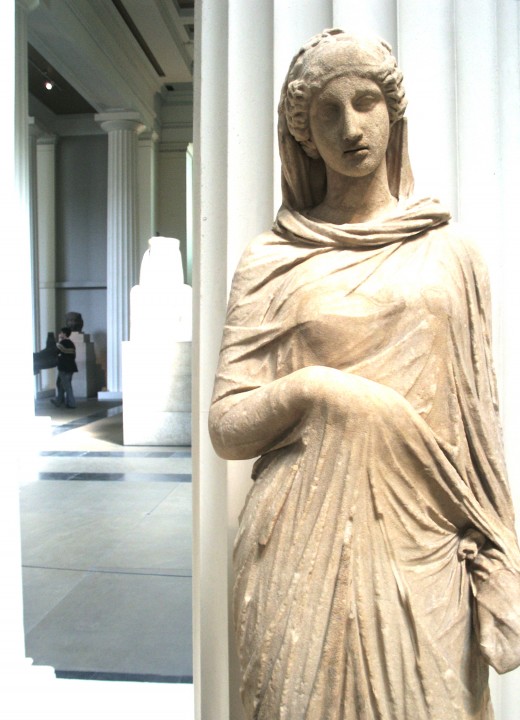
The Postmodern View of Beauty
It is an unavoidable fact that everyone does not and cannot have absolute agreement on everything that is beautiful and everything that is not. The saying, “Beauty is in the eye of the beholder” has much truth to it, and this is part of the trouble in trying to define beauty. If every man had the same views on what a beautiful woman was, then no man, except one, would be content with his own wife. This seems to be the ruling logic of the postmodernist thinker: that there is no absolute standard of beauty. Something may create an emotional admiration (and emotion becomes the judge of beauty) in one person but not in another, and it is deemed only beautiful for one person and not another.
The modernists of the Enlightenment decided that the arts and sciences were a tool that would shape and cultivate a person’s inner psyche by synchronizing it with the corresponding order of beauty:
…there was a powerful climate of opinion in Bach’s day that assigned to the arts a prominent function in the shaping of human thought and life. Not a little of modern aestheticism can be traced to the idea so prevalent in the Enlightenment that the Beautiful had power to transform men by its sheer beauty. According to this idea, there was an almost mathematical symmetry in the human psyche that needed to be related to some symmetry outside it. (Pelikan, Jaroslav, Fools for Christ: Essays on the True, the Good, and the Beautiful, [Philadelphia: Muhlenberg Press, 1955])
Though the Enlightenment modernists were correct in believing that there was something beneficial to men in good art and that Beauty is an absolute quality, they failed to see that there is an eternal greatness in Beauty which cannot be calculated by any principles of aesthetic harmony. Just as Adler tried to determine the absolute good by finding out what the real needs in man are, the Enlightenment thinkers used the same method to find the absolute beautiful. If something beautiful corresponds to a vital need in the human psyche and seems to adjust thought and life for the better, it must be Beautiful in the absolute sense.

An outgrowth of this philosophy was Friedrich Nietzsche’s worship of that which he considered to be absolute Beauty, though his response to beauty was emotional and not intellectual. As problematic as Nietzsche’s philosophy became during the later part of his life, his original search was purely for the ultimate Beauty which held eternity inside itself. He was not pursuing eternal holiness. If he were, he might have found the real Beauty, which would ultimately have led to Goodness and Truth. Instead, he pursued every aesthetically pleasing thing as if it were God Himself. He rejected the intellect and all truths derived by it, for it could not explain great things as beautiful expression in the arts could. He rejected the moral standards and all moral goodness for it created a restricting chain and was distant from sensual emotion. His conclusion was that the beautiful was the only religion man needed. In experiencing the beautiful, man was complete. Eventually he died, a crazed and unsatisfied drug addict, who declared that “God is dead” because he could not worship God as Creator of the beauty, and worshipped the insufficient beauty instead.
Once again, a tertium quid is needed to give a standard for what beauty really is, how it relates to God, and how God uses it to relate to man.
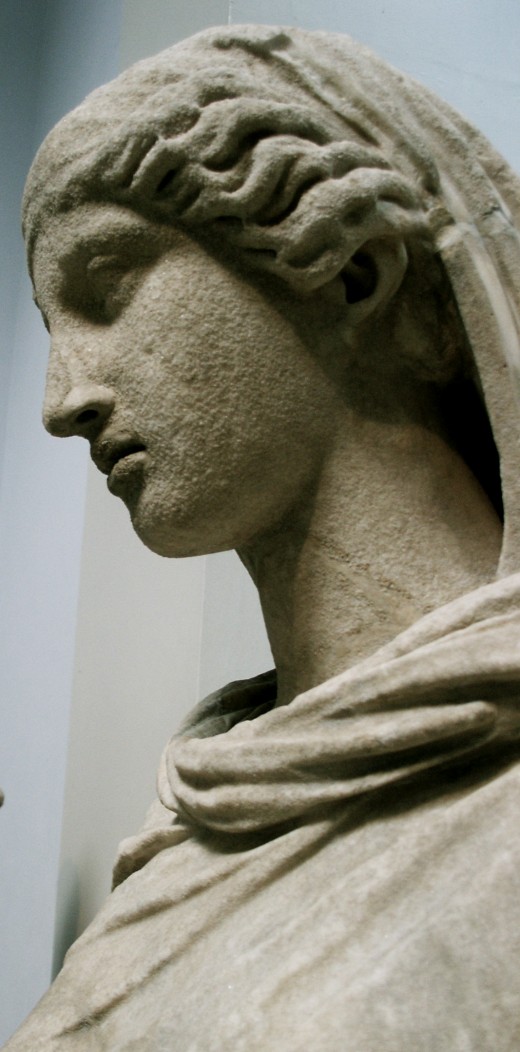
The Beauty of Holiness
It is difficult to describe beauty without describing what it looks like in relation to the medium it is carried in. Yet we know the medium may vary and the concept of “beauty” is still retainable in our minds apart from the medium. Whether the medium be a lady’s face, a painting, a song, a play, a rose, we can know what a “beautiful” one of each of these is like. The Bible indicates that beauty is always carried in the medium of holiness, and thus beauty is an absolute quality, just as holiness (synonym for the absolute moral Good mentioned earlier) is. In the verses below are references to “the beauty of holiness,” showing how the Bible relates one to the other:
1 Chronicles 16:29 Give unto the LORD the glory due unto his name: bring an offering, and come before him: worship the LORD in the beauty of holiness.
2 Chronicles 20:21 And when he had consulted with the people, he appointed singers unto the LORD, and that should praise the beauty of holiness, as they went out before the army, and to say, Praise the LORD; for his mercy endureth for ever.
Psalm 29:2 Give unto the LORD the glory due unto His name; worship the LORD in the beauty of holiness.
Psalm 96:9 O worship the LORD in the beauty of holiness: fear before Him, all the earth.
Psalm 110:3 Thy people shall be willing in the day of thy power, in the beauties of holiness from the womb of the morning: thou hast the dew of thy youth.
These verses indicate that the absolute quality of God’s holiness is a beautiful thing. It seems evident that if God uses a certain quality to describe one of His absolute and infallible attributes, that quality becomes absolute itself, and cannot be relative to what a person may think or feel about God’s holiness. By using a certain term, God sets the standard definition for what that term actually means.
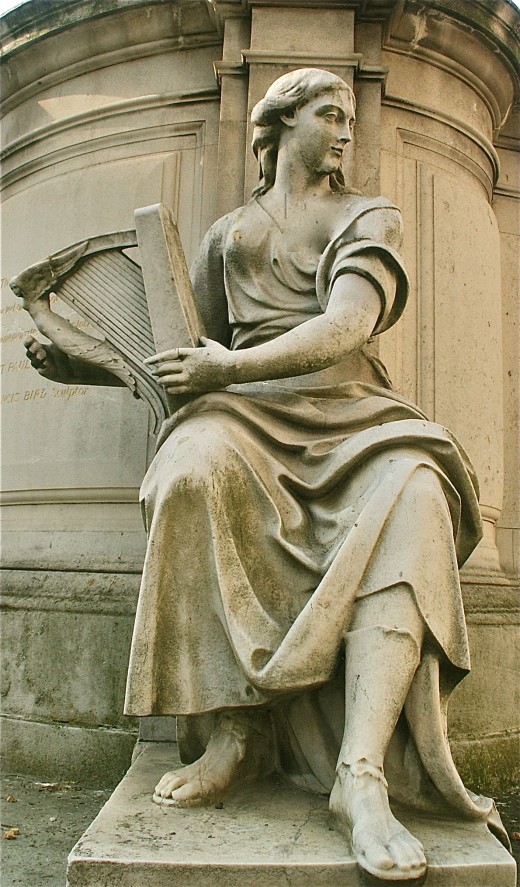
While we can say “God is Truth, God is Good,” it is more difficult to say that God is Beauty. However, Beauty is certainly an essential aspect of His nature, and frequently shows itself in the poetic and prophetic books:
Psalm 27:4 One thing have I desired of the LORD, that will I seek after; that I may dwell in the house of the LORD all the days of my life, to behold the beauty of the LORD, and to enquire in his temple.
Psalm 90:17 And let the beauty of the LORD our God be upon us: and establish thou the work of our hands upon us; yea, the work of our hands establish thou it.
Psalm 96:6 Honour and majesty are before Him: strength and beauty are in His sanctuary.
Isaiah 28:5 In that day shall the LORD of hosts be for a crown of glory, and for a diadem of beauty, unto the residue of His people.
Isaiah 33:17 Thine eyes shall see the king in His beauty: they shall behold the land that is very far off.
Ezekiel 16:14 And thy renown went forth among the heathen for thy beauty: for it was perfect through My comeliness, which I had put upon thee, saith the Lord GOD.

Not only is God beautiful Himself, but He is the source of all Beauty as the Creator of the universe. This fact is foundational to the Christian worldview, for the Bible holds that God is the initiator, founder, and sustainer of all things. Therefore, as the source of Beauty, He makes all things that are set apart for His glory both holy and beautiful, defining "beauty" in the process. According to these verses, beauty is "God's business."
Psalm 50:2 Out of Zion, the perfection of beauty, God hath shined.
Isaiah 61:3 To appoint unto them that mourn in Zion, to give unto them beauty for ashes, the oil of joy for mourning, the garment of praise for the spirit of heaviness; that they might be called trees of righteousness, the planting of the LORD, that he might be glorified.
Psalm 48:2 Beautiful for situation, the joy of the whole earth, is mount Zion, on the sides of the north, the city of the great King.
Ecclesiastes 3:11 He hath made every thing beautiful in his time: also he hath set the world in their heart, so that no man can find out the work that God maketh from the beginning to the end.
Isaiah 4:2 In that day shall the branch of the LORD be beautiful and glorious, and the fruit of the earth shall be excellent and comely for them that are escaped of Israel.
Isaiah 52:1,7Awake, awake; put on thy strength, O Zion; put on thy beautiful garments, O Jerusalem, the holy city: for henceforth there shall no more come into thee the uncircumcised and the unclean...How beautiful upon the mountains are the feet of him that bringeth good tidings, that publisheth peace; that bringeth good tidings of good, that publisheth salvation; that saith unto Zion, Thy God reigneth!
Ezekiel 16:12-14 “And I put a jewel in your nose, earring in your ears, and a beautiful crown on your head. Thus you were adorned with gold and silver, and your clothing was of fine linen, silk, and embroidered cloth. You ate pastry of fine flour, honey, and oil. You were exceedingly beautiful, and succeeded to royalty. Your fame went out among the nations because of your beauty, for it was perfect through My splendor which I had bestowed on you,” says the Lord.
Psalm 149:4 For the LORD taketh pleasure in his people: He will beautify the meek with salvation.
Isaiah 60:13 The glory of Lebanon shall come unto thee, the fir tree, the pine tree, and the box together, to beautify the place of my sanctuary; and I will make the place of My feet glorious.
The Hebrew words used for "beauty" in the verses above have also been translated in other similar texts into the words: glory, adornment, holy adornment (of public worship), honour, decoration, splendor, finery (of garments, jewels); glory of rank, renown, (or) of God; fair, beautiful, handsome; to be comely, beautiful, befitting. We may safely understand that the Hebrew words for “beauty” carry the same meanings we attribute to the English word “beauty.”
It is interesting to note that one of the common Greek terms used for “good” in the New Testament also “denotes that which is intrinsically good, and so, goodly, fair, beautiful.” The definition also includes intrinsic goodness in “that which is well adapted to its circumstances or ends”, and “that which is ethically good, right, noble, honorable.” Beauty is a genuinely “Good” thing, in the morally perfect sense.
We see that God desires to be worshipped in “the beauty of holiness,” He is beautiful Himself, and He makes that which belongs to His holy (purified and set apart) kingdom beautiful. In every way, God is the author of Beauty, for He is the author of all Good. As the highest authority on Beauty, He holds the standard of Beauty in His person. An old hymn phrases this well, when it says we are "clothed in beauty not our own." Truly all things that we consider beautiful are only reflecting the absolute and pure Beauty of God.

Beauty in the Culture of the 21st Century
This brings us to the final discussion of the cultural implications of Truth, Goodness, and Beauty. Though Beauty is perhaps the most misunderstood of the trio, we know from Romans 1:20 that the invisible attributes of God are clearly seen; and therefore all men do have an instinct for what is truly beautiful. Yes, there may be personal preferences, and God has created man with individual likes and dislikes. But the sort of beauty we are analyzing here is the eternal beauty that is beautiful outside of any person’s opinion deeming it so.
Today’s culture worships beauty, but it is beauty that has been contaminated and can no longer be associated with the “beauty of holiness.” Women stress over body fat, makeup, face shape and clothing. At the same time, culture’s fashion queens and “beauty divas” tattoo their skin and wear ragged, faded, and dirty clothing. Fashion models show pouting lips and hollow eyes that flaunt a rebellious and seductive fire. Culture has reveled in the power of beauty --and in man’s power over beauty-- by taking every element of the Holy out of the Beautiful, and leaving only a painted hollow sepulcher with nothing inside but rotting bones.
Culture has even borrowed from Nietzsche’s philosophy by praising the operas, the music, the art, and the splendor, for the sake of the expression of art itself-- not realizing that this sort of art’s beauty hardly goes any deeper than the medium used to convey it. Because the knowledge and pursuit of absolute Truth has been taken out of the culture’s agenda, and because goodness is only that which fills a need or happens to “work” for an individual at the time, the meaning has also gone out of art. And we are left with the wrapping of the gift, which was pretty and emotionally stirring before it was opened, but has nothing inside. The Holiness has disappeared.
The principle that God’s “true” Truth is the absolute standard for all of life is the foundational concept of the Christian worldview. Without realizing first that there is absolute Truth, and second, that absolute truth is not found by following the agreement of the majority, every other area of life and practice is left without guidance. We cannot figure out the best way to educate, govern a country, feed the hungry, run an organization, or live life, without understanding that the only “True Truth” we will ever find in these areas must come straight from God.
The principle that God holds the true truth about Goodness is also foundational to the Christian worldview. Without realizing first that there is such a thing as a standard for both moral good and beneficial good, and second, that the intrinsic “Good” cannot be found by man’s reason and intuition into his own needs, then we are left without standard for right and wrong, good and evil. Though some may not “need” to know the standard for ultimate good, and may even live life successfully, their ultimate need will be discovered when every secret thing is brought to light, whether it was good or whether it was evil. In that day no pleas of innocence will be answered, for the truth about God and His Goodness has been hidden in every man’s heart and every man knows it.
The foundation of God’s absolute Truth, with the building blocks of God’s principles of Good on top of the foundation, provides a sturdy platform to build the pillars of the Beauty of Holiness. While culture strips holiness from her beauty and mars her skin with un-truth and rebellion, God’s absolute standard of Beautiful Holiness remains secure as the message of the eternal splendor of God’s pure and mighty nature. Any Christian who desires to bring God’s law to bear on every area of culture must not neglect to add a study of Beauty and its effects to his repertoire.
May the King eternal triumph as His Truth, His Goodness, and the Beauty of His Holiness transform culture.
© 2009 Jane Grey


